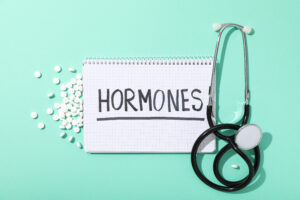Vitamin D isn’t just another vitamin — it’s your body’s sunshine switch. Yet, millions of people around the world are running low on it without even realizing it. Have you been feeling tired, moody, or achy lately? That might be your body whispering for more Vitamin D.
The good news? You can restore your levels naturally — without depending entirely on pills. Let’s uncover how you can bring that sunshine back into your system with simple, doable habits.
Table of Contents
Understanding Vitamin D and Its Role in Your Body
Think of Vitamin D as your body’s hidden multitasker. It doesn’t just help your bones — it also keeps your immune system strong, supports your muscles, and even helps your brain stay sharp.
When your skin meets sunlight, it creates Vitamin D naturally. That’s why it’s often called the “sunshine vitamin.” But today’s indoor lifestyle, sunscreen use, and pollution make that natural process harder than ever.
Your body uses Vitamin D to absorb calcium — the building block of strong bones and teeth. It also keeps inflammation low and boosts mood by balancing serotonin levels.
Without enough of it, you might feel tired, weak, or even anxious. So understanding Vitamin D isn’t just about nutrition — it’s about keeping your entire system in harmony.
Also Read : Obesity

Exploring 10 Natural Ways to Beat Vitamin D Deficiency
Now that you understand how essential Vitamin D is for your health and energy, let’s look at ten simple, natural ways to bring your levels back to balance.
Each of these tips is practical, science-backed, and easy to include in your daily routine — no complicated plans or strict diets needed.
1. Soak Up the Morning Sun
Your skin can make Vitamin D when sunlight hits it. The best time? Early morning, between 8 a.m. and 10 a.m.
Just 10–20 minutes of sunlight a few times a week can do wonders.
Here’s a small tip: expose your arms and legs if you can, and skip sunscreen for those few minutes (but only during that short window).
If you live somewhere cloudy or cold, stand near a sunny window or try a Vitamin D lamp during winter.
Also Read : 14 Foods You Should Never Refrigerate
2. Add Fatty Fish to Your Plate
Fish like salmon, tuna, sardines, and mackerel are natural treasures for your health. Just one serving can give you almost half of your daily needs.
If you don’t love fish, start small — maybe grilled salmon once a week. Or try tuna in a sandwich for lunch.
For vegetarians, look for fortified plant-based options like soy milk or oat milk that include Vitamin D.
Also Read : Horse Gram for Weight Management
3. Embrace Fortified Foods
Also Read : Rock Salt
4. Cook with Egg Yolks
Egg yolks are tiny powerhouses of Vitamin D. One egg gives around 5–6% of your daily value.
Scrambled, boiled, or mixed into pancakes — eggs make it easy to stay nourished.
But remember: most Vitamin D is in the yolk, not the white. So don’t skip it unless your doctor advises otherwise.
Also Read : Isabgol for Weight Management
5. Try Mushrooms Grown in Sunlight
Also Read : Ajwain Treasure (Carom Seeds)
6. Maintain a Healthy Weight
Studies show that extra body fat can trap essential nutrients, making them harder for your body to use.
That’s why maintaining a balanced weight helps your Vitamin D work efficiently.
A mix of regular walks, stretching, and mindful eating can help you keep things in harmony.
Think of it this way: you’re not just improving your Vitamin D — you’re upgrading your entire system.
Also Read : Health After 30
7. Add Healthy Fats to Your Diet
Also Read : How to Prevent from CovId & other Viruses
8. Spend Time Outdoors Every Day
9. Keep Your Gut Healthy
Also Read : Jeera Benefits (Cumin Seeds)
10. Know When to Test and Supplement
Even with all these natural habits, some people still struggle with low levels — especially if they have darker skin, live in cold regions, or stay indoors most of the day.
If you often feel low energy or muscle pain, ask your doctor for a simple Vitamin D blood test.
If your levels are low, supplements can fill the gap safely — just follow medical advice for dosage.
Also Read : How to Improve Your Eyesight
Why Vitamin D Matters So Much
Vitamin D does more than support bones — it affects your mood, immunity, heart, and hormones.
Low levels can make you feel fatigued, anxious, or achy without a clear reason.
When your levels are balanced, you’ll notice:
- Stronger immunity
- Better sleep
- Improved mood
- More energy throughout the day
Think of it as your body’s “sunshine battery.” Keep it charged, and everything else feels brighter.
Also Read : The Truth About Sleep Deprivation

Also Read : Hair Guide
FAQs
How much time does your body need to restore healthy Vitamin D levels?
Usually, it takes about 2–3 months of consistent sunlight and diet changes, but everyone’s body is different.
Is it possible to absorb an excess amount of Vitamin D through sunlight?
Which form of Vitamin D supplement is best?
Does sunscreen block Vitamin D?
Yes, SPF blocks UVB rays that help make Vitamin D. So try short sun exposure before applying sunscreen.
Also Read : Poisonous Foods
A Warm Takeaway
Beating Vitamin D deficiency doesn’t need complicated plans.
You can start with something as simple as standing in the morning sun or adding mushrooms and eggs to your meals.
When you nurture your body with sunlight, good food, and balance, you’re not just fixing a deficiency — you’re choosing vitality.
So go ahead, soak in some sunshine today — your body and mind will thank you.
Also Read : Anti-Aging









